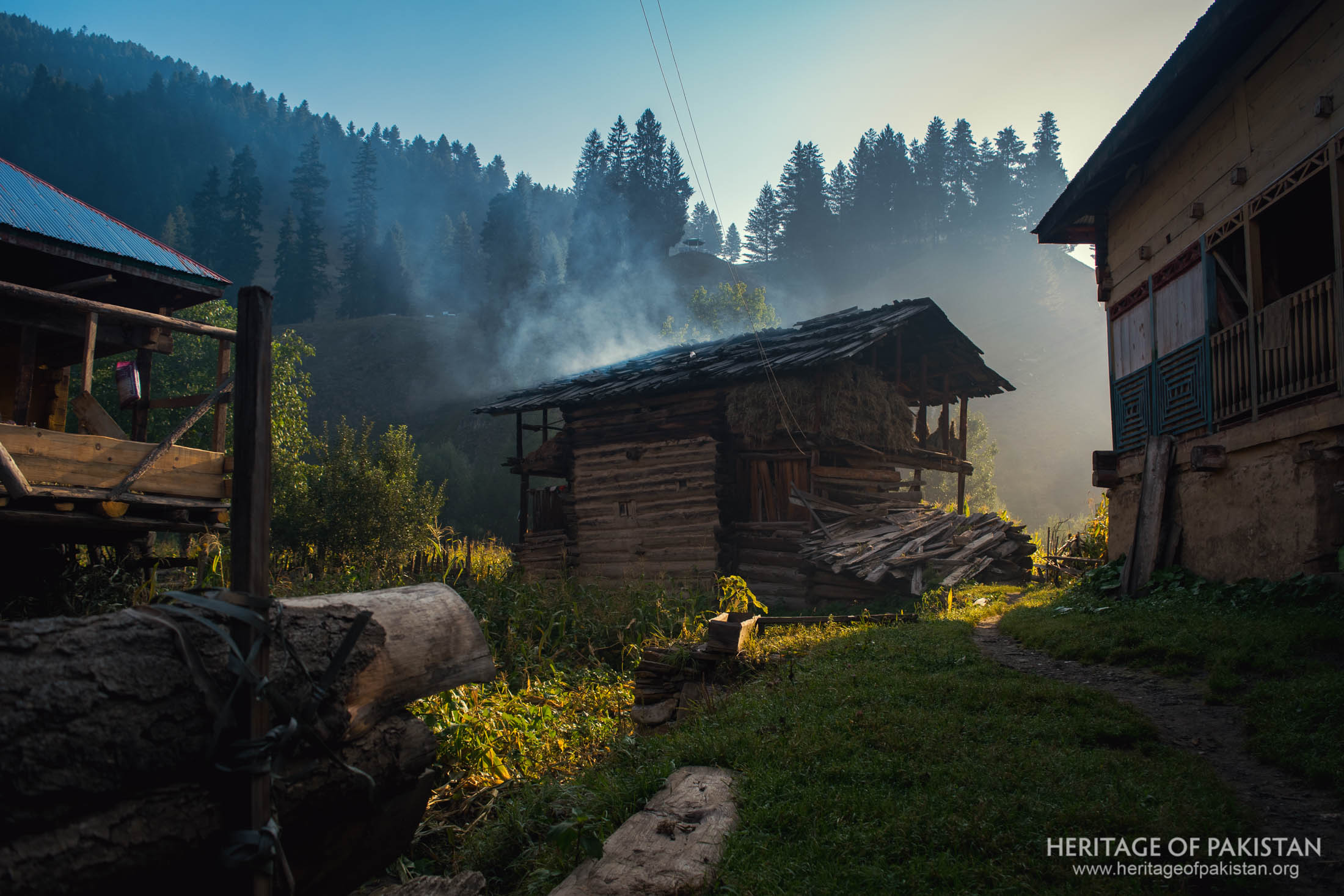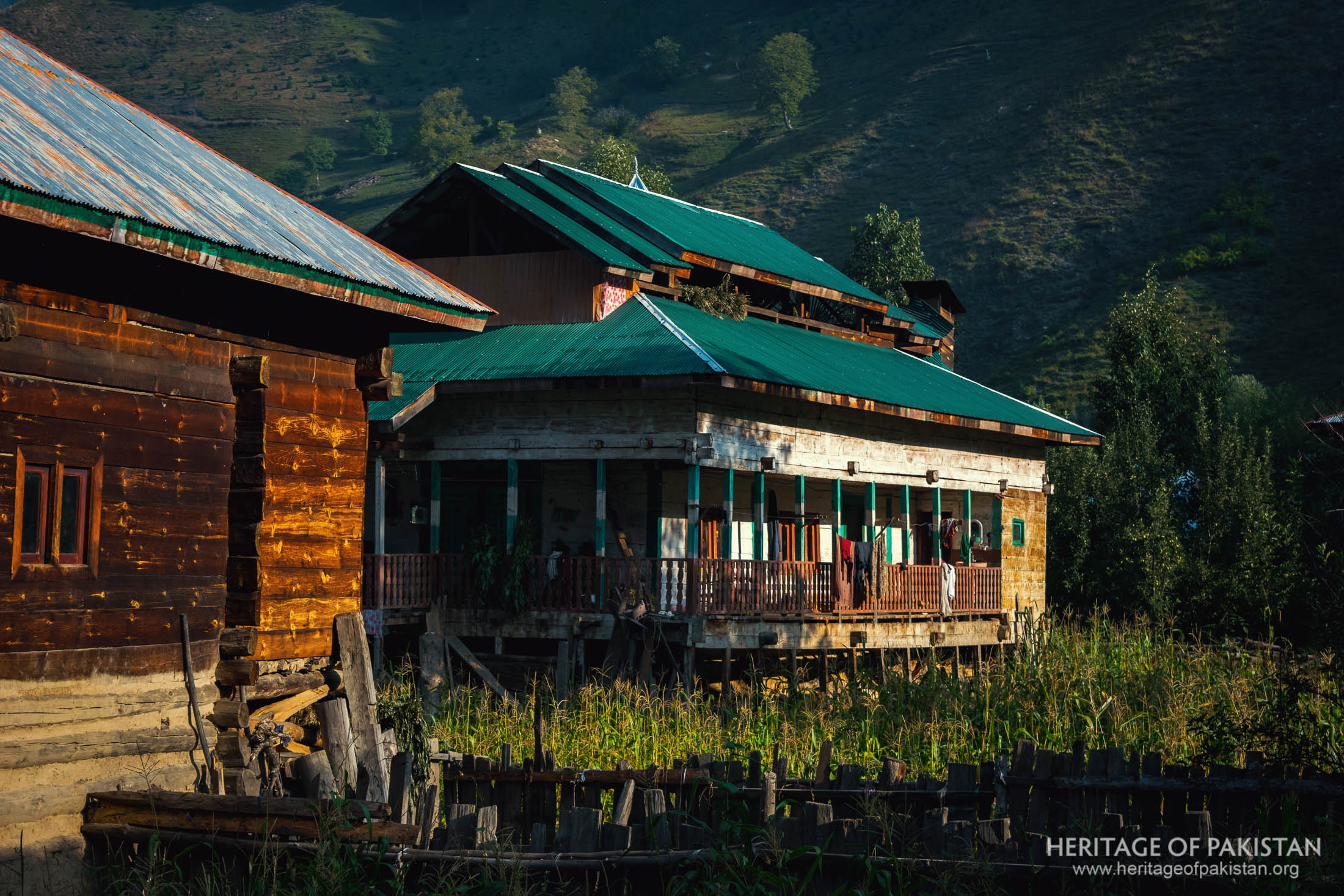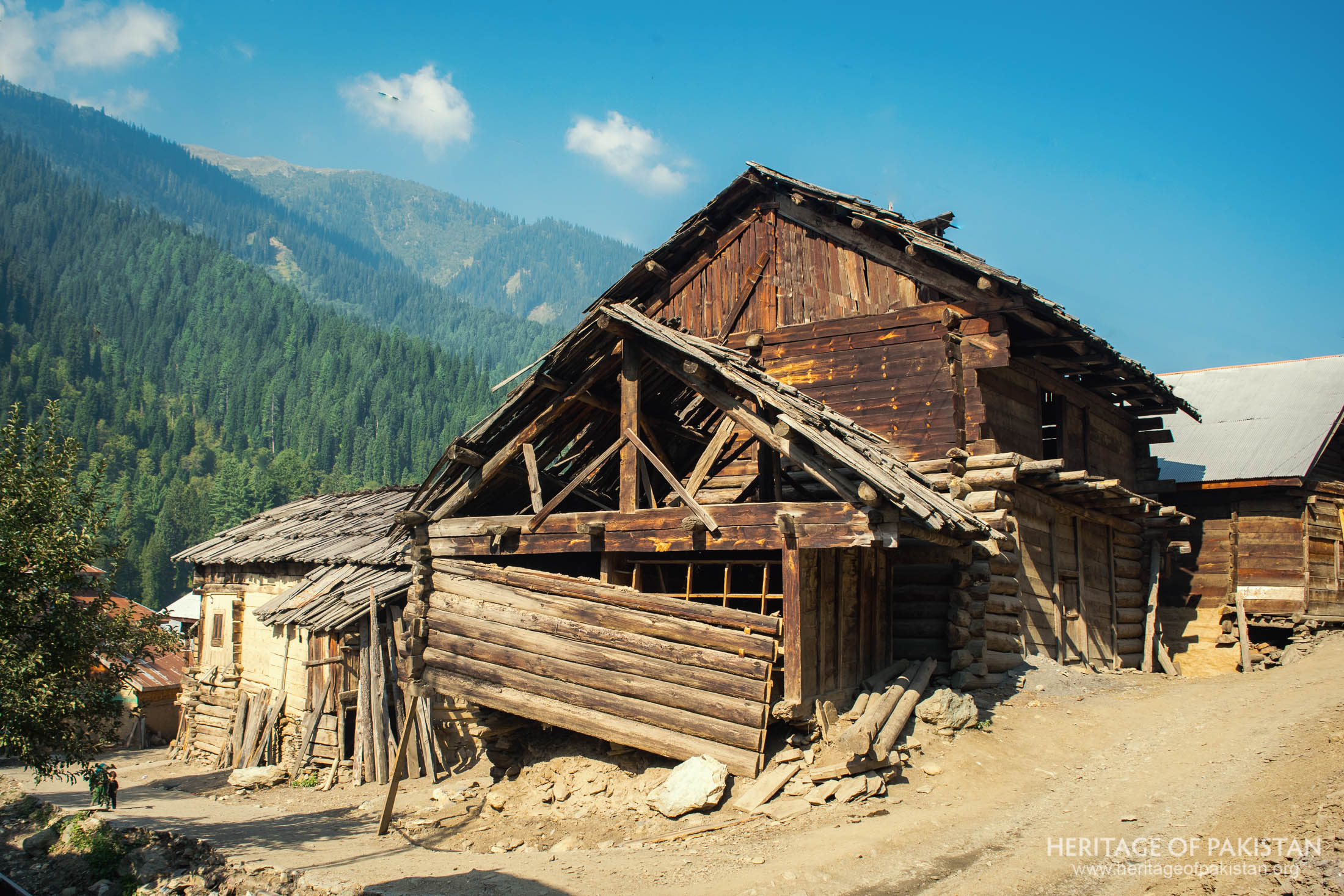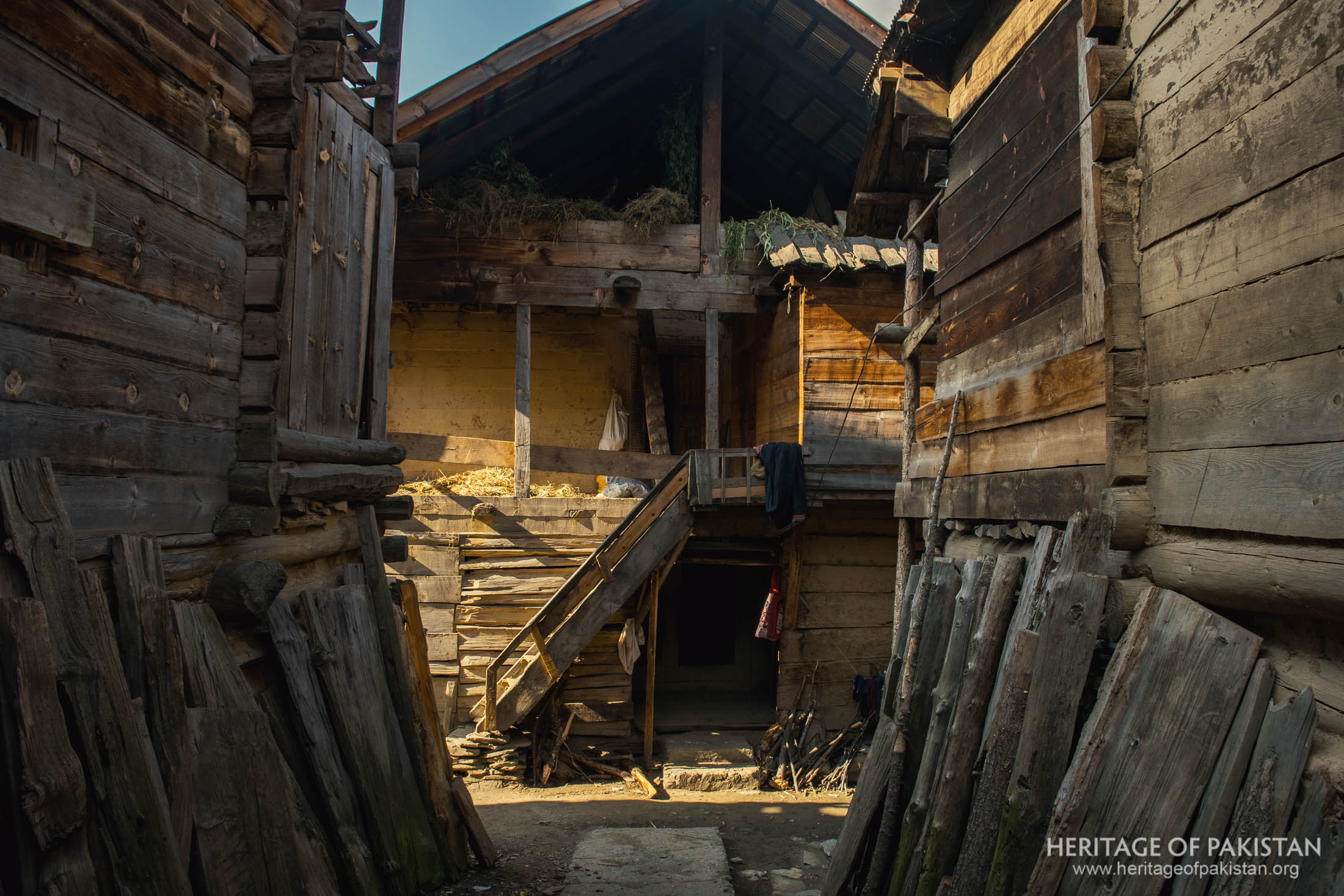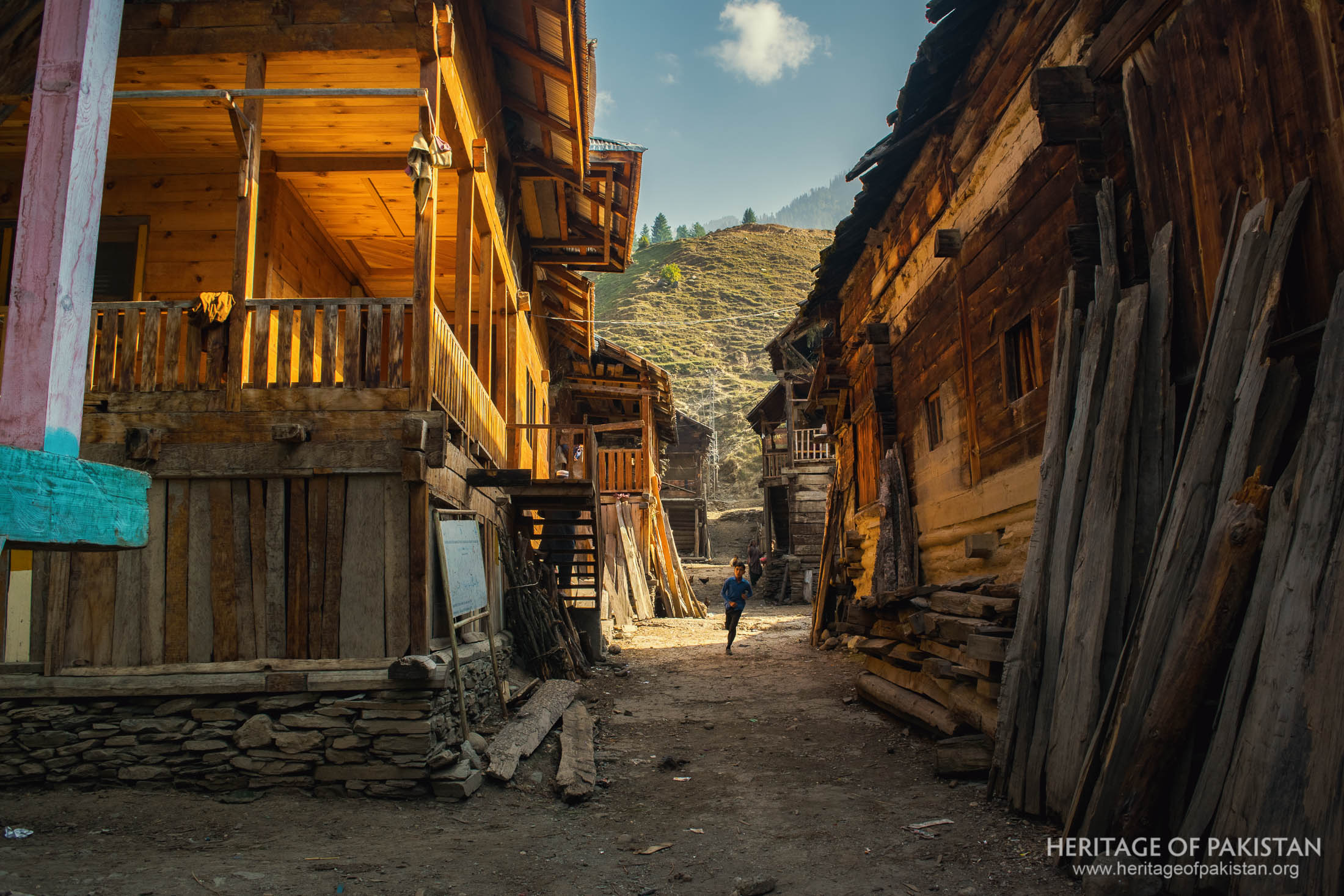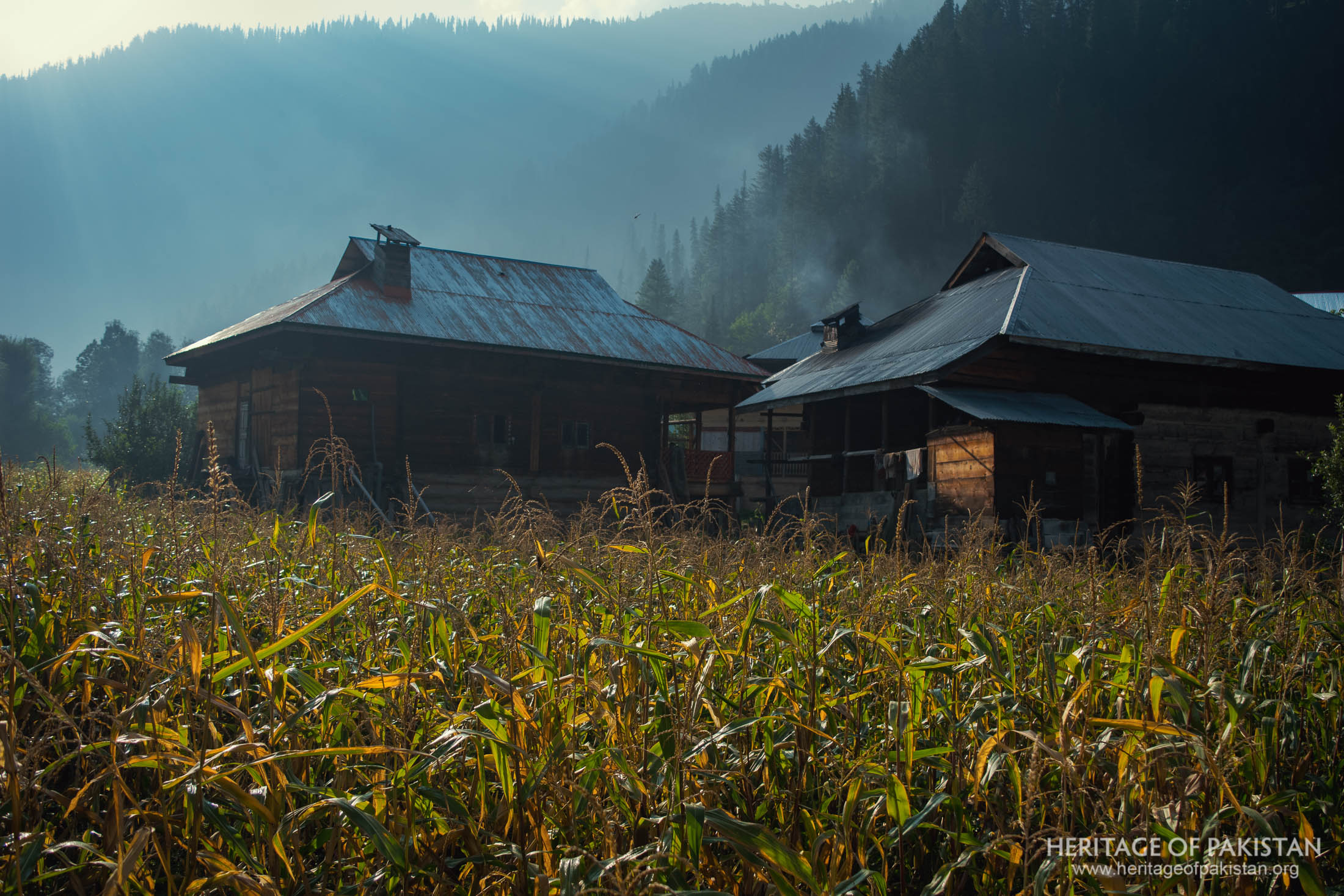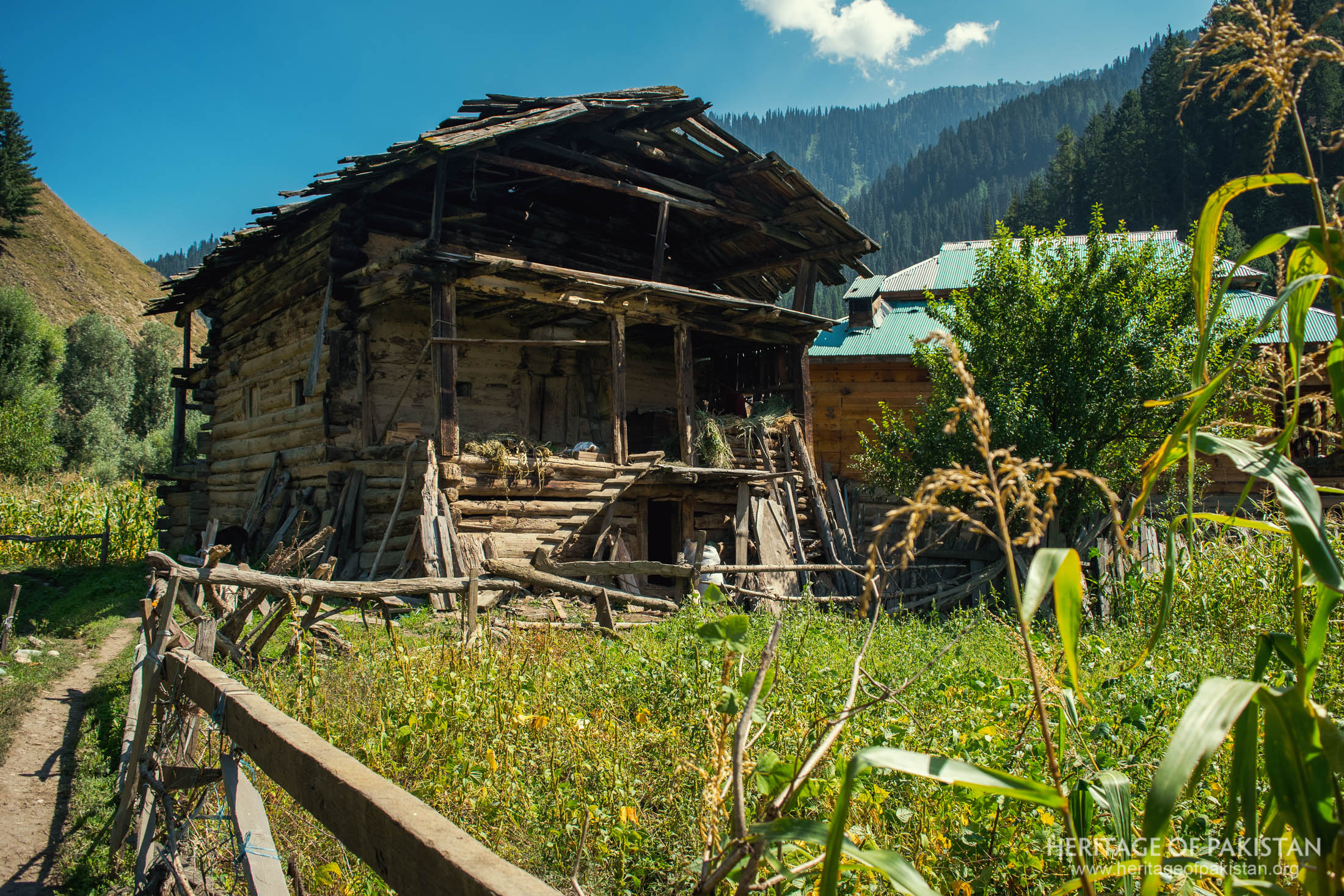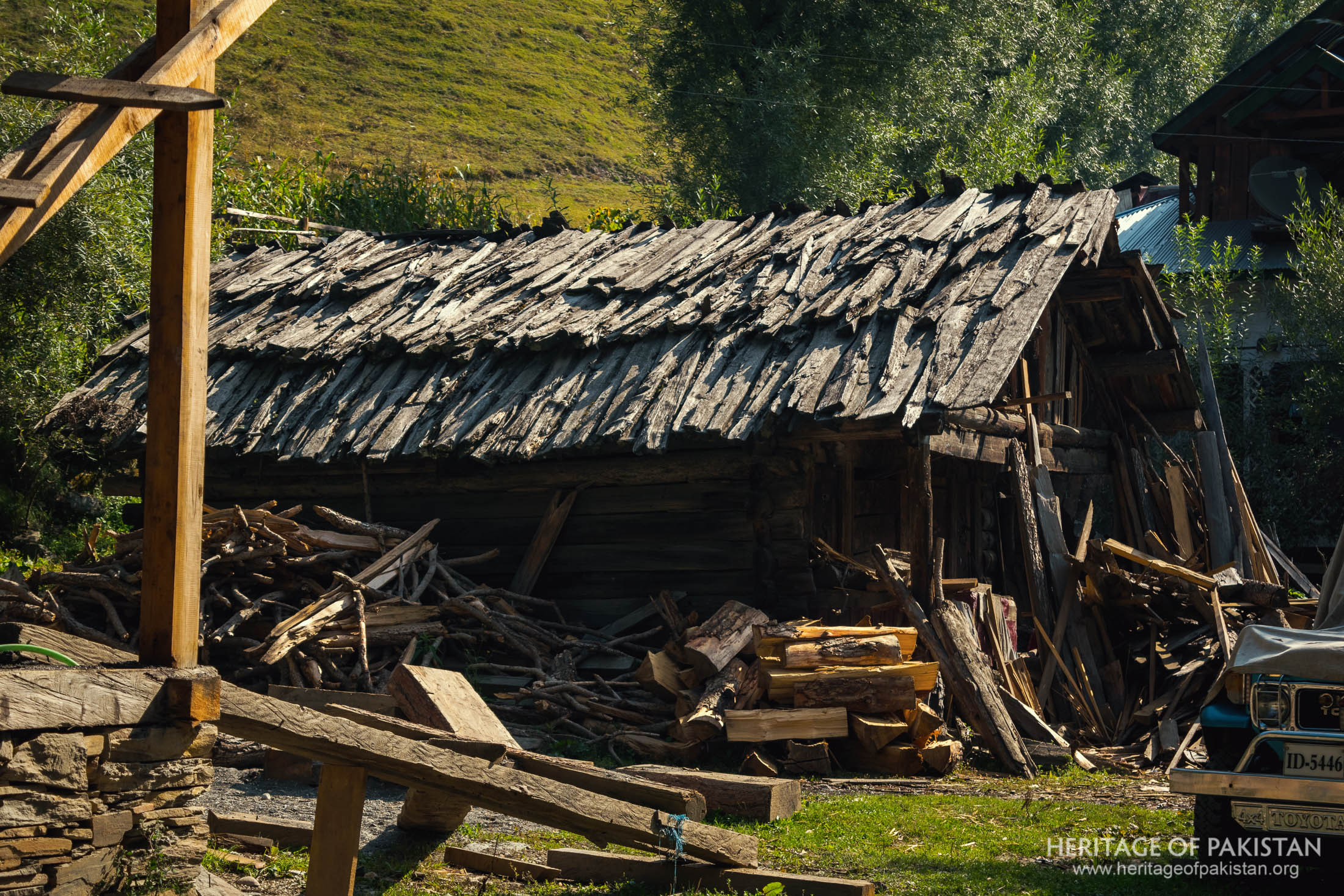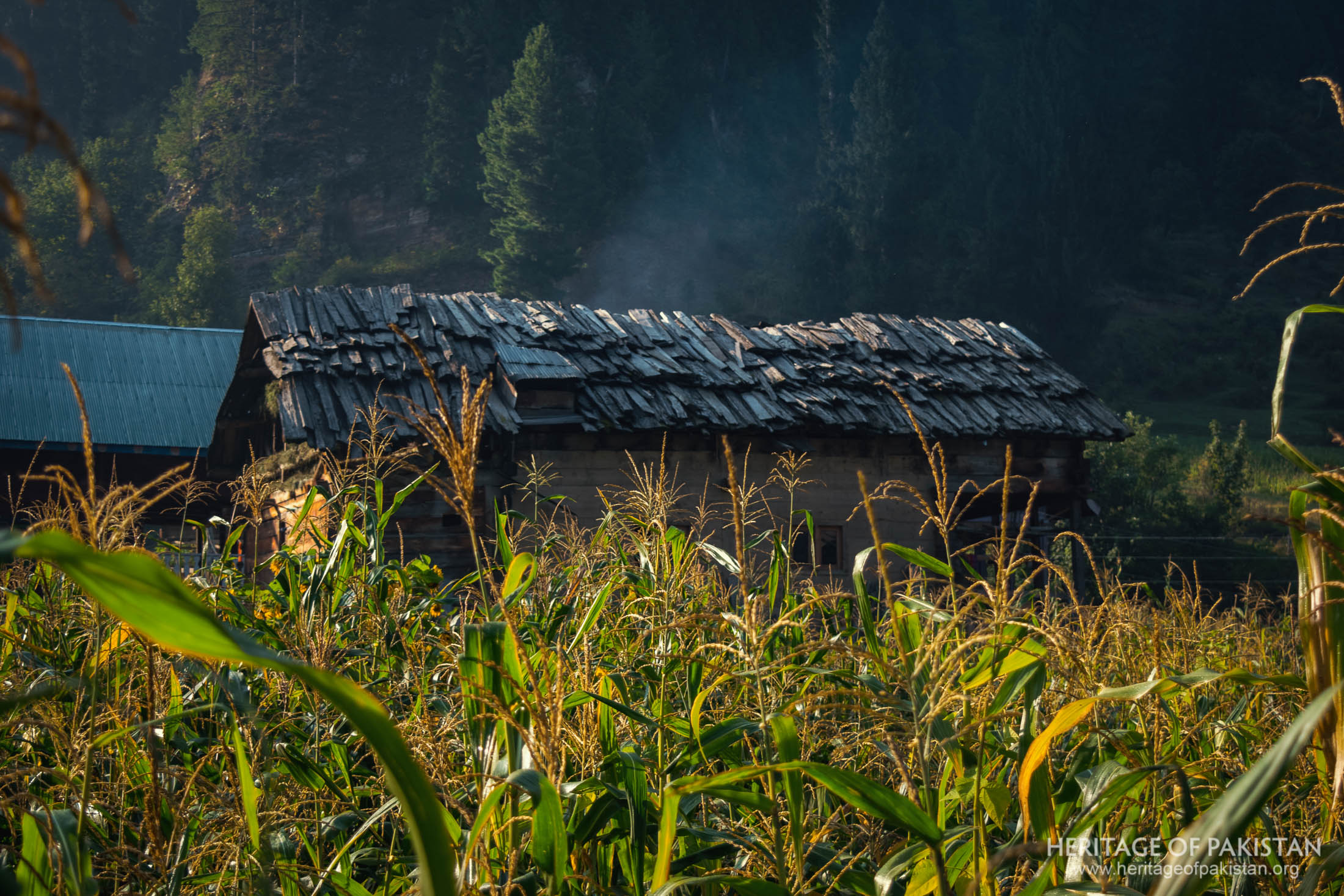Textarea
Taobat village, located approximately 40 kilometers from the town of Kel, is the last village in the Neelum Valley, Azad Kashmir, Pakistan.
This village is not only geographically significant but also culturally and architecturally rich. It retains the beautiful traditional wooden vernacular Kashmiri architecture, with houses primarily constructed from wood.
This local architectural style, rare and unique, makes Taobat one of the few places where such traditions are still preserved.
These traditional wooden houses cannot be found anywhere else in Pakistan and due to their uniqueness, it is important they be studied, documented and preserved.
Taobat village's distinctive feature is its traditional wooden architecture, which is constructed by the locals using vernacular knowledge. This architectural heritage, rooted in the use of wood, stone, and mud, offers a unique blend of traditional craftsmanship and climatic responsiveness.
hese materials are readily available in the Kashmir region, ensuring that the structures are well-suited to the local environment in terms of sustainability.
Taobat comprises around 100 houses, with a significant portion of the population engaged in agriculture. The fields surrounding the village are rich with crops such as corn, kidney beans, potatoes, and various other vegetables.
This agricultural lifestyle sustains the village, although many men seek employment in urban centers to support their families. The agricultural practices in Taobat are integral to its identity. The fields are meticulously maintained, and the variety of crops grown demonstrates the villagers' agricultural expertise
Resource management is a critical aspect of life in Taobat as in any community in harsh climates. Wood is a vital resource, collected in the summer and stacked outside the houses for use as fuel throughout the year
This architectural heritage not only preserves the cultural identity of the region but also offers valuable insights into sustainable building practices.


